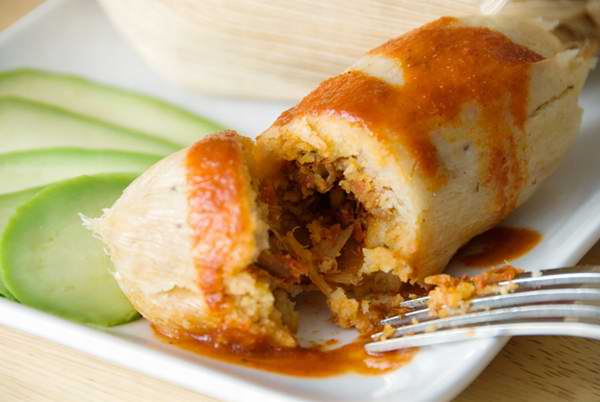Tamales are best known as a Mexican dish which is made of seasoned meat (and/or vegetables, fruits, cheeses, chilies, etc.) wrapped in a masa (corn-based dough) steamed or baked in corn husks. There are actually different ways to prepare it, ingredients varying from one region or country to another.
Others often associate tamales as a delicacy of Spanish ancestry, well in fact it may be hard to make out its origin. It is said to originate from the Mesoamericans which ranges from central Mexico to Belize, Guatemala, El Salvador, Honduras, Nicaragua and northern Costa Rica up to some pre-Columbian societies.

A closer look at tamales
Tamales, also known as tamal or tamalli, has a starchy texture from its cornmeal base. Different fillings give it different aromas and tastes. Depending on the country, the fillings vary from being spicy, sweet, or even a combination of both.
The masa – basically this is your corn-based dough. You can purchase a ready-mix masa from local Mexican or Spanish stores. You need to create one that is spiced and flavored depending on your version (or taste) of tamales, having a consistency that of cookie dough.
The fillings – the fun part, where you can get creative. Fillings normally are made up of shredded pork or chicken (sometimes chunks). Common add-ons are red or green salsa, raisins or dried fruit, chorizos, and jalapenos. Some Asian countries also add mushrooms, mung beans, chestnuts, peanuts, fried onions and tomatoes and various herbs and spices. You can actually add anything that would suit your taste, there is no exact or right way to stuff or mix-up a tamale.
South America vs. Asia
There is a general distinct taste between food prepared by South Americans and that by Asians. The later more often than not, loves mixes of herbs and spices to give a discrete sweet-sour-spicy blend. South Americans on the other hand, are known for zesty and chili meals and dishes frequently including peppers, tomatoes, onions and garlic in the preparation.
On that note, the way tamales are prepared in these two regions would vary significantly. Asians also make use of different kinds of leaves for wrapping. In more tropical countries banana leaves are a popular wrapper for steamed treats. Others even try avocado leaves. The aroma and effect on taste actually can be more enhanced when charcoal-grilled, which is the case in some Asian countries.
Whether tamales are steamed, baked or even grilled doesn’t really determine the quality of its flavor. The best way to enjoy good tamales is determined by the way a culture consumes a comfort food. Some people find grated cheese and taco sauce matches it well. Others would opt for some guacamole, baked beans, or even chili to go on the side. Choosing to serve tamales with hot coffee or beer is a decision that can be debated by a few. The solution can lie on the time of the day you are gorging on the snack, if it is an early morn or afternoon treat you might as well have it with a nice cup of coffee but if you’ll have tamales later in the evening, can’t deny that it serves as a perfect beer match too.
Brandon Jones is a blogger who enjoys writing about various Hispanic foods.

